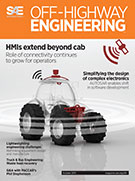Technical Paper
Evaluating Trajectory Privacy in Autonomous Vehicular Communications
2019-04-02
2019-01-0487
Autonomous vehicles might one day be able to implement privacy preserving driving patterns which humans may find too difficult to implement. In order to measure the difference between location privacy achieved by humans versus location privacy achieved by autonomous vehicles, this paper measures privacy as trajectory anonymity, as opposed to single location privacy or continuous privacy. This paper evaluates how trajectory privacy for randomized driving patterns could be twice as effective for autonomous vehicles using diverted paths compared to Google Map API generated shortest paths. The result shows vehicles mobility patterns could impact trajectory and location privacy. Moreover, the results show that the proposed metric outperforms both K-anonymity and KDT-anonymity.











